Top 8 Free Offline Music Apps for Android/iPhone in 2024
Having music on your phone is probably one of the more common ways we take advantage of smartphone technology. Whether running or walking, listening through your car speakers, or even when studying, having your favorite music easily accessible makes your day better.
But even today, we don't always have an internet connection available, which is why an offline music app is so useful. Whether you have an Android or iOS device, we will help you find the best offline music app to help you enjoy your tunes wherever you may be.
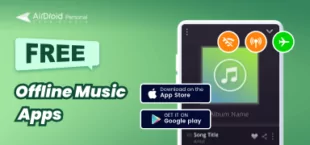
Our Top Picks - Overview of the Best Free Offline Music Apps
1.Musify- Android&iOS
If you don't have your music collection, Musify offers offline play without cost. It doesn't have the music choice that Spotify or even Amazon Music may offer, but it's the best option to get access to songs to stream or download without spending anything.
2.Pulsar- Android&iOS&Chrome
Pulsar integrates into Last.FM, the music social network, features equalizers and comprehensive playlist tools too. It will display lyrics for the songs you are listening to and even have voice commands to control it hands-free.
3.AIMP- Android
AIMP is among the best offline music players for Android users to listen to music without wifi, it is only available on that platform, so if you are using an iOS device, you will need to look elsewhere.
4.Jet Audio HD Music Player - Android&iOS
Jet Audio HD Music Player copes well with large libraries and remains responsive. If you want the best-sounding player, this is probably it.
5.Poweramp- Android
This one is a direct competitor to Pulsar. However, while it mostly matches that player for features, Poweramp can only be considered among the best as an offline music player for Android, as there is no iOS version.
6.Vox- iOS
If you have a collection of FLAC files and are not worried about the extra storage capacity they use, then Vox is the best music app for iPhone by far.
7.Rocket Player- Android&iOS
It's a very fast app, it always feels responsive, and it all works smoothly. It is best for downloading music and listening offline for free. It's a great user experience, and the music sounds fantastic when played through it too.
8.Offline Music Player - iOS
The best Offline Music Player for iPhone. It is very easy to get up and running, set up a playlist, etc.
With so many great options, which is the best offline music app will depend on the type of device you have and what you want from the app. Overall, the best option for both iOS and Android is Pulsar; it is an easy-to-use app that includes all the tools and features you may ever need.
However, you can ignore them if you want, and you are still left with a great app that offers fantastic audio. It can be everything you need, from a basic music player to an audiophile toolkit, and it can grow with you and your audio collection.
AirDroid Personal is available for both iOS and Android, as well as macOS, and Windows for desktops and even the web online, and simplifies file transfers to your mobile device. With AirDroid, you can manage your files easily and send them directly to your phone wirelessly, making it a simple process to get your favorite music onto your phone to play.
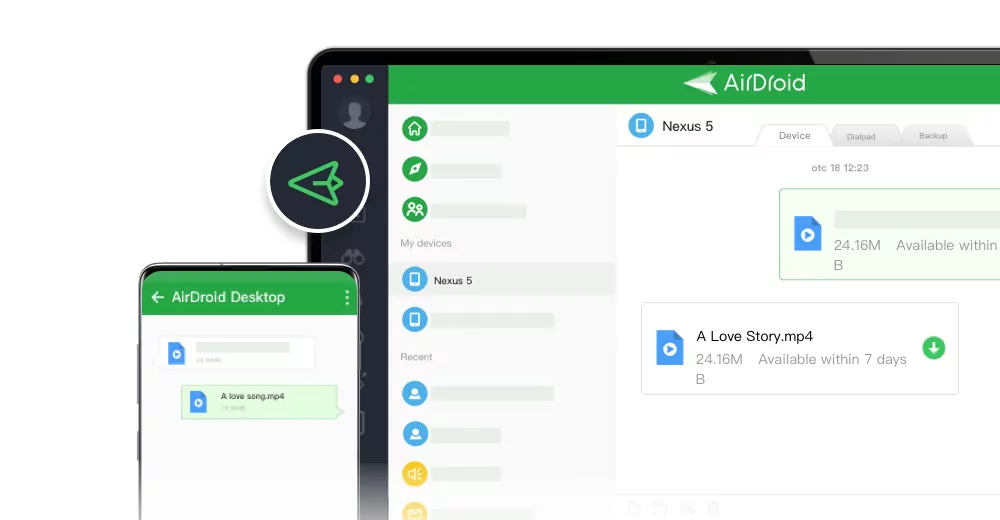
Just drag and drop files through AirDroid and that is it. You can create folders for different genres of music or anything you want, all without having to mess around with data cables or anything else. It's the perfect companion for your offline music player, whichever you choose.
Musify
Musify is a complete music streaming platform like Spotify. However, unlike that more well-known company, Musify allows you to download your playlists even as a free user. The offline music streaming app is available for both iOS and Android devices, and with over 50 million songs in the catalog, it offers plenty of choice for any musical taste.
As with many streaming services, you need to pay to get the best quality sound, with the free option having a reduced bitrate. However, unless you listen to the two versions side by side, you will probably not even notice. It is easy to use, and you can download both single songs and entire playlists with one click, ready for offline playback.
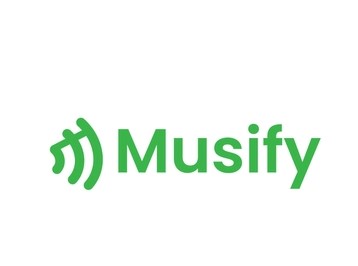
Pulsar
One of the most popular in our offline music player list, some consider it the best free music app of them all. Available for both Android and iOS and compatible with Chromecast, Pulsar is the offline music app for iPhone and Android users who like lots of features.
As you expect from a product that has been around for years this, the interface is very refined, with the app feeling very responsive even when scrolling through large collections.
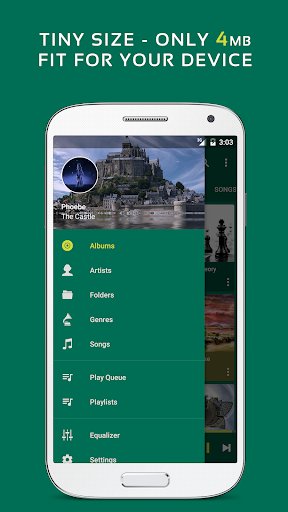
Creating playlists and sorting by artist and genre are all easy, and while Last.FM is not for everyone; if you do use it, the integration is seamless. Sound can be anything you want it to be, the equalizer looks a little intimidating but is simple to use, and it is very easy to get great sounds from this music player.
Widely considered the most comprehensive player out there, if you are looking for a free music download for offline listening, Pulsar is one to think about.
AIMP
A versatile player that can deal with OGG and WMA files as well as the usual MP3 format, AIMP is another offline music player as well as the best music app without wifi that features a comprehensive equalizer for fine-tuning your sound. The ads on the free version of this one are less intrusive than most, and it is particularly useful for creating playlists for your listening.
You can create playlists by genre or artist in just a few taps, and of course, you always have the option of completely custom playlists with a simple interface. AIMP sounds good too, although it does seem to use more battery power than some others on the list.
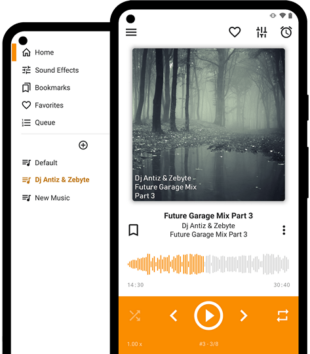
Jet Audio HD Music Player
One of the best free offline music apps around and available for both Android and iOS devices, Jet Audio is perfect for anyone who has a large library of listening to music offline to or who loves to get the sound perfect every time. There is a paid option, but the free version has all the features; however, it will show ads during playback.
Using Jet Audio is a pleasure, it has a clear interface to use, and it includes a clever system for reducing file size to help you fit more music on your device. It sounds great, and while standard playback is really high quality, there is also a full equalizer to let you really tweak your sound to get everything how you want it. With AM3D audio enhancer also included, it really has a great sound whatever you listen to.
On the first launch, the software searches for relevant files on your device, and once it has all your music imported, it is easy to build playlists and so on. It copes well with large libraries and remains responsive. If you want the best-sounding player, this is probably it.
Also Read: What Are the Best Free Music Downloaders for Android in 2023
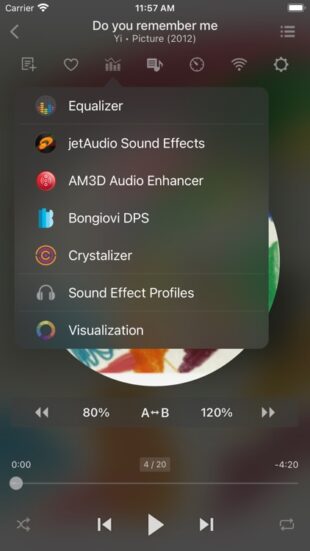
Poweramp
Like Pulsar, Poweramp will play almost any type of music file you have, from MP3 and WAV to FLAC and MP4. It will display lyrics and includes a number of excellent music tools, including an easy-to-use equalizer. It also has some great features and will automatically find your music files on your mobile device. Creating playlists is not as easy as it is with Pulsar, though the interface feels clunkier, and in general, it seems a little less polished than its competitor.
Having said that, it sounds great, and the tools it offers make it easy to dial in the sound that you want. Overall it's a great option, but Pulsar does everything just that bit better.
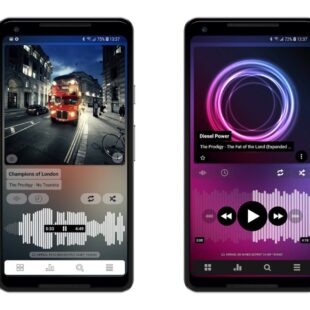
Vox
An iOS-only player that can handle MP3 and the high-definition FLAC format, VOX has a slick interface and simple controls. It can play offline music you have on your device and sounds great, but can also integrate with your iTunes library, Spotify account, and several other streaming platforms to play all your tunes in a single space when you have online access too.
In that way, it offers the most comprehensive solution for playing music both online and offline, which is why so many consider it the best free music app for iPhones. Playing FLAC files you really can hear the difference compared to standard MP3s. While in isolation the standard files sound great, when you compare them with FLAC high-definition files, you immediately notice how much more open and detailed the sound is from the FLAC file.
If you just want to listen to standard MP3s and podcasts and are not bothered about the extra quality, then it perhaps lacks in features, with a less intuitive interface, and there are other options, such as Pulsar, that do it better.
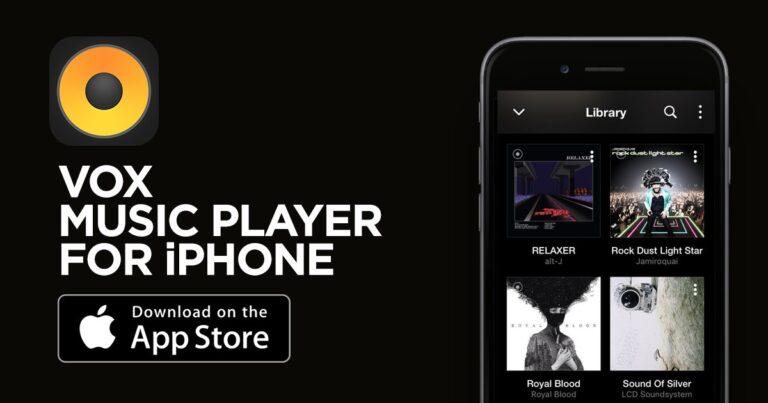
Also Read: 6 Best MP3 Downloader Sites of 2023
Rocket Player
A great offline music app for Android, Rocket Player has been around longer than most alternatives. That maturity is obvious when you use it, the interface is refined, and everything just works. Ads on the free version are unintrusive, and it is Chromecast compatible.
Rocket player is quite basic, in that it doesn't have the ability to play high-definition audio, its playlist tools are not as comprehensive as some, and it doesn't have the range of equalizer controls that others in the list offer, however, it remains one to consider.
It may lack some of the more advanced features found elsewhere, but if you want an easy-to-use, reliable way to access your own files, this is one of the best apps to listen to music offline for free.
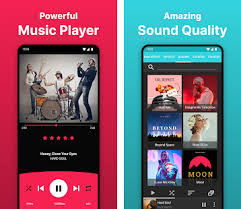
Offline Music Player
A simple iOS-only app that does exactly what the name suggests. Import your music from a variety of sources and it will download to your phone and create playlists to enjoy offline. The best part about this one is the simple interface.
It is very easy to get up and running, set up a playlist, and so on. Searching for a specific song or artist is fast too. It has a decent sound, a little flat compared to some with advanced equalizers and other playback tools, and it also lacks the ability to open those high-definition music files too.
But in use, it just works. Create a playlist or point it at your favorite album and you get clear easy playback. You can leave it running in the background and it won't slow your phone, great for multitasking, and is a great option for anyone wanting the basics on iOS.
Another simple, no-frills solution, may lack the extra features of some of the best, but as an offline music app for iPhone/iPad, it has everything you need to enjoy music without an internet connection.
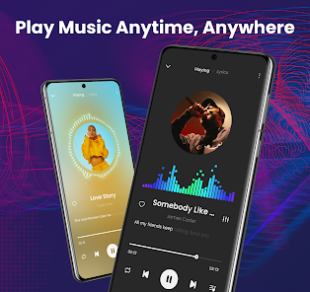
Tips for Listening to Music Offline
Getting the most out of offline music players does take a little planning ahead. Here are three ways you can improve the experience.
Transfer Music to Your Device
If you are listening offline, you need the digital music files on the device you are listening on. You can simply download files straight to the device, or you can create a music folder and transfer them from elsewhere. To make life easier, you can have subfolders for different artists, or folders for music, spoken books, and podcasts to make it easier to manage.
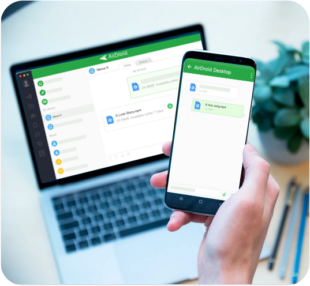
Also Read: How to Download Music on iPhone without iTunes?
Block Background Data Usage
Whether it is ads or updates, most apps connect to the internet during use, but to avoid that you can block background data usage for the app through your operating system. How it is done depends on what device you are using, but there will be a specific data use settings section that allows you to stop an app from using data in the background.
Enable Smart Download
If you are using a streaming-capable player for offline use, smart download, or the ability to download specific songs or playlists, is a simple way to have all the music you want to listen to on your mobile device. This approach is probably the easiest way to get music ready for offline listening, just select the songs, click download and the player does the rest. Once on your device, you can then play them all offline without any data usage, wherever you are.
Enable Offline Mode
For Spotify or other streaming-capable apps, it is important to remember that even if you have downloaded your playlists and favorite tracks, by default they will always stream any song selected rather than use a local file. Remember to switch to offline mode to make them use your downloaded files, or they will still be using your data to stream.
Offline Listening with Popular Music Streaming Service (Subscription Needed)
Spotify
One of the most popular platforms for music streaming there is. With over 50 million songs in its library, Spotify is something for everyone. A subscription means ad-free unlimited play, with a restricted free option that includes ads available. You can create and share playlists, listen to stations dedicated to an artist or genre, or let the recommendations guide you.

Also Read: How to Use Spotify Offline Without Premium? Explained!
YouTube Music
With a large library and the familiar YouTube interface, YouTube Music is one of the most user-friendly options. There are a number of features, playlists you can share, radio stations and more. The library is large, but perhaps less than Spotify for instance, but for most of us it will be easy to find something we like.
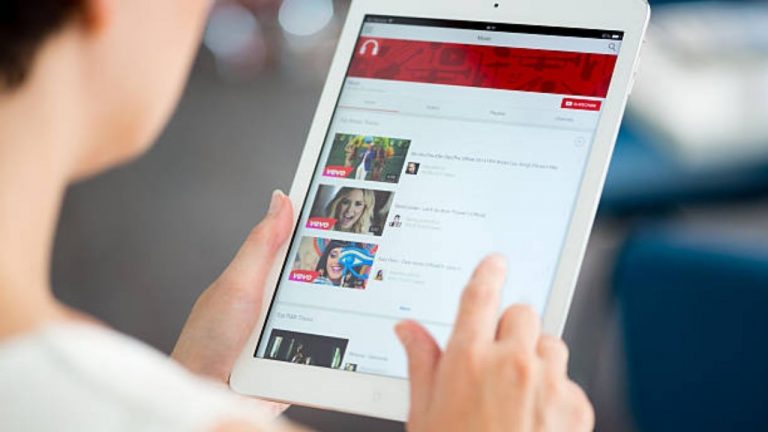
Also Read: Top 7 Ways to Download Music from YouTube in 2023
Pandora
Play local files or stream music and podcasts to your device. Pandora has a free option supported by ads and a premium ad-free service. Pandora doesn't have the biggest library, but its discovery and search functions are excellent. With radio stations dedicated to artists or genres, it is easy to find something to listen t
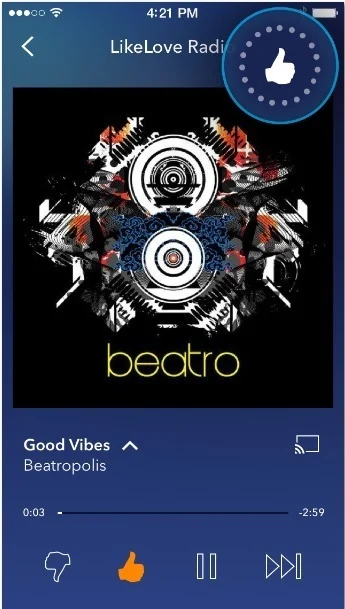
Soundcloud
Soundcloud is an app or online-based music player that focuses on artists. It is especially popular with new artists who can release tracks through the platform. It has a free service and paid options, and while it doesn't really compete with the others in terms of major bands. There is a huge library of music from independent artists, and you are sure to find some gems to listen to.
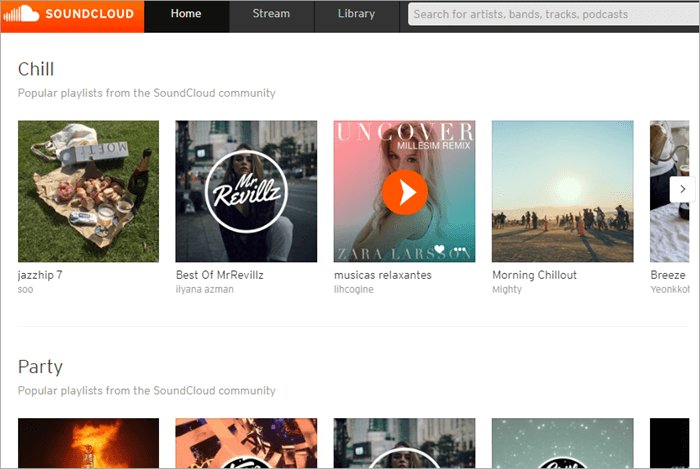

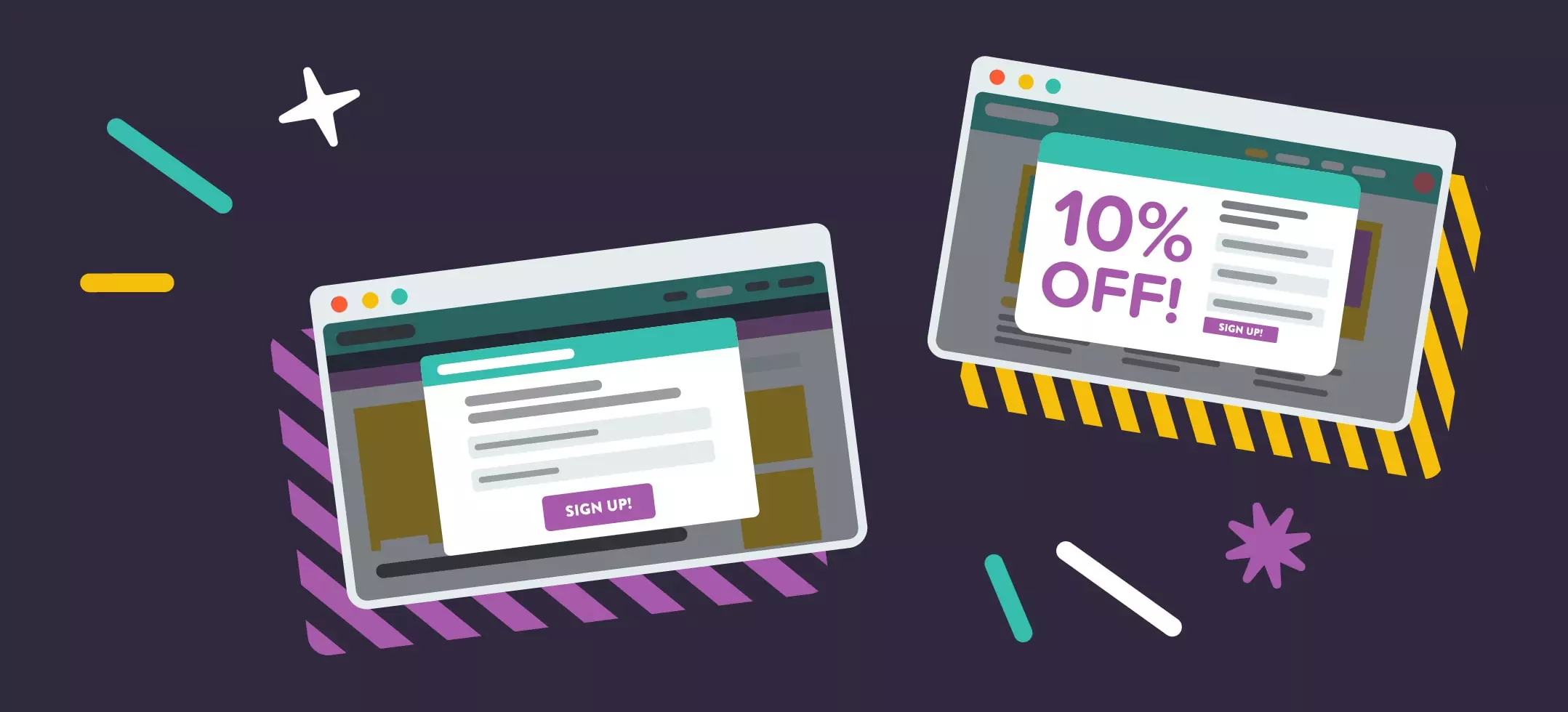
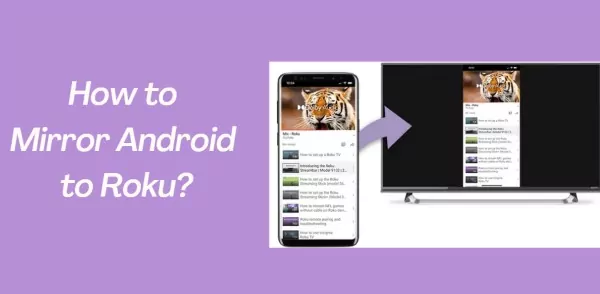
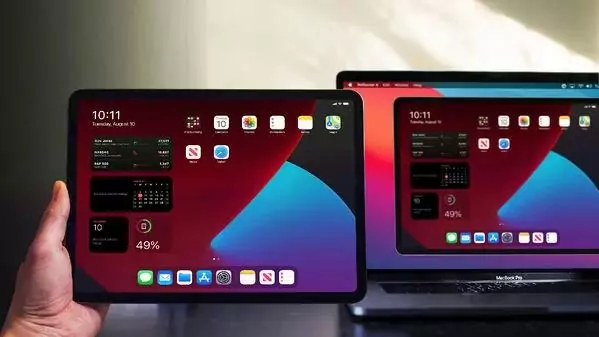
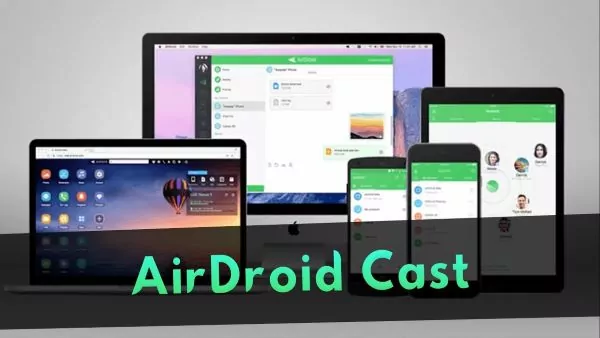




Leave a Reply.